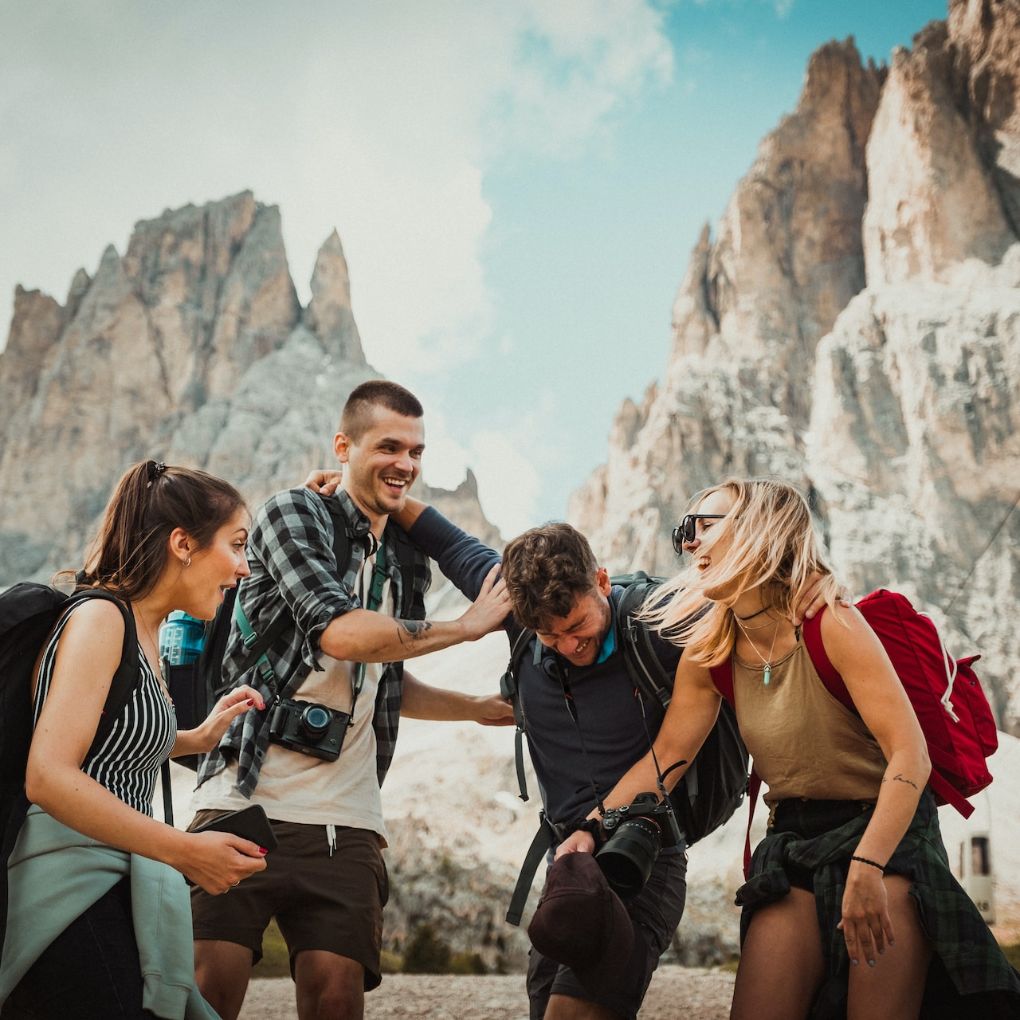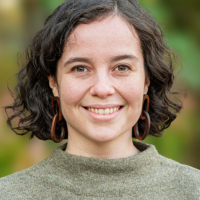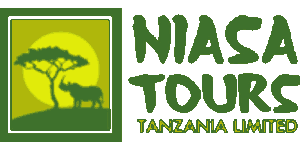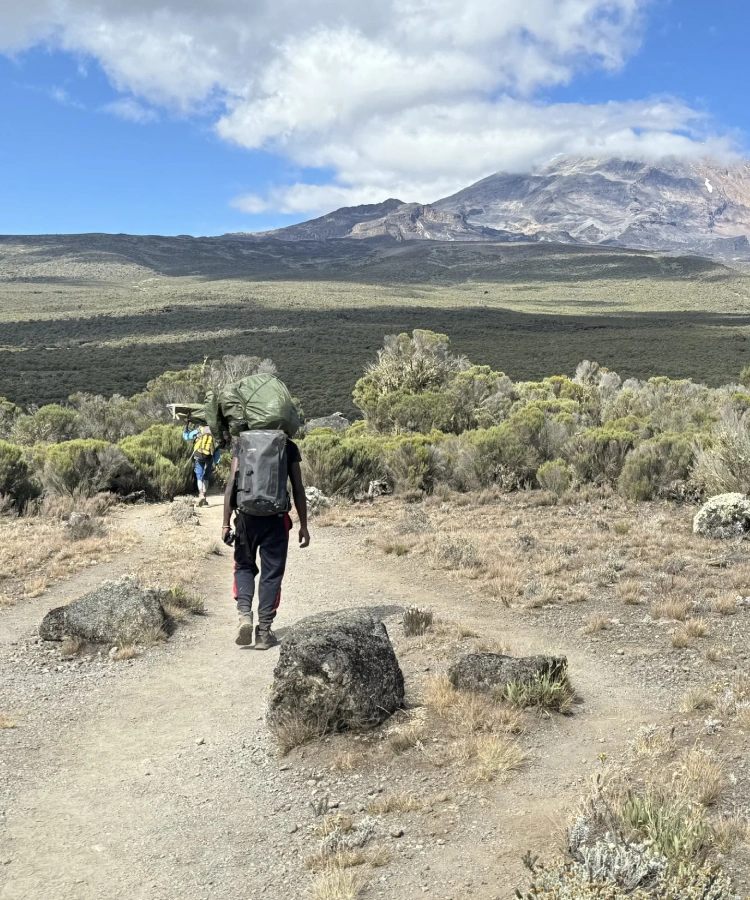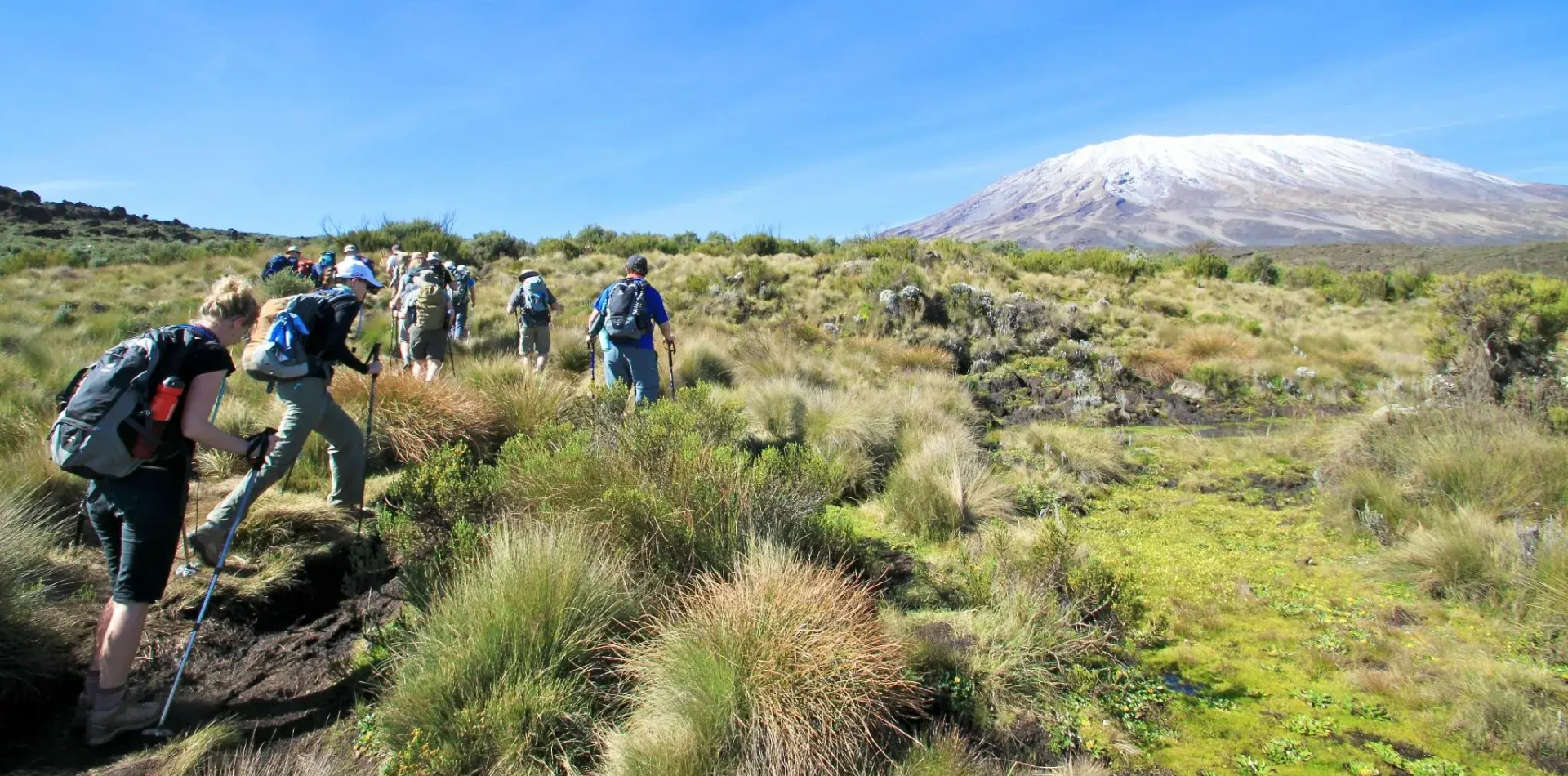
6 Days Kilimanjaro Trekking Itinerary – Umbwe Route
About This Safari
The Umbwe Route is not for the faint of heart — and that’s exactly why some climbers choose it. Known as Kilimanjaro’s steepest and most direct route, Umbwe is wild, raw, and adventurous. It’s also the least trafficked, which means you’ll walk for hours in complete solitude, surrounded by dense rainforest, looming cliffs, and shifting clouds.
This route is short, sharp, and challenging, with less time for acclimatization than other routes. It’s best suited for fit, experienced trekkers or those who’ve spent time at high altitudes before. But what Umbwe lacks in comfort, it makes up for in atmosphere — there’s something deeply humbling about walking this trail, where the mountain feels untamed and untouchable. By Day 2, you’re already high in the alpine zone. By Day 4, you’re preparing to summit. It’s intense, unforgettable, and deeply rewarding.
Tour Highlights
Ultimate Challenge
Most challenging and least crowded route on Kilimanjaro
Wild Isolation
Raw, wild terrain and a real sense of isolation.
Intense Ascent
Early altitude gains make it intense and rewarding.
Glacier Views
Dramatic views of Kibo’s southern glaciers and crater rim.
Price starts at 2500USD depending on the number of people per group
Tour Details
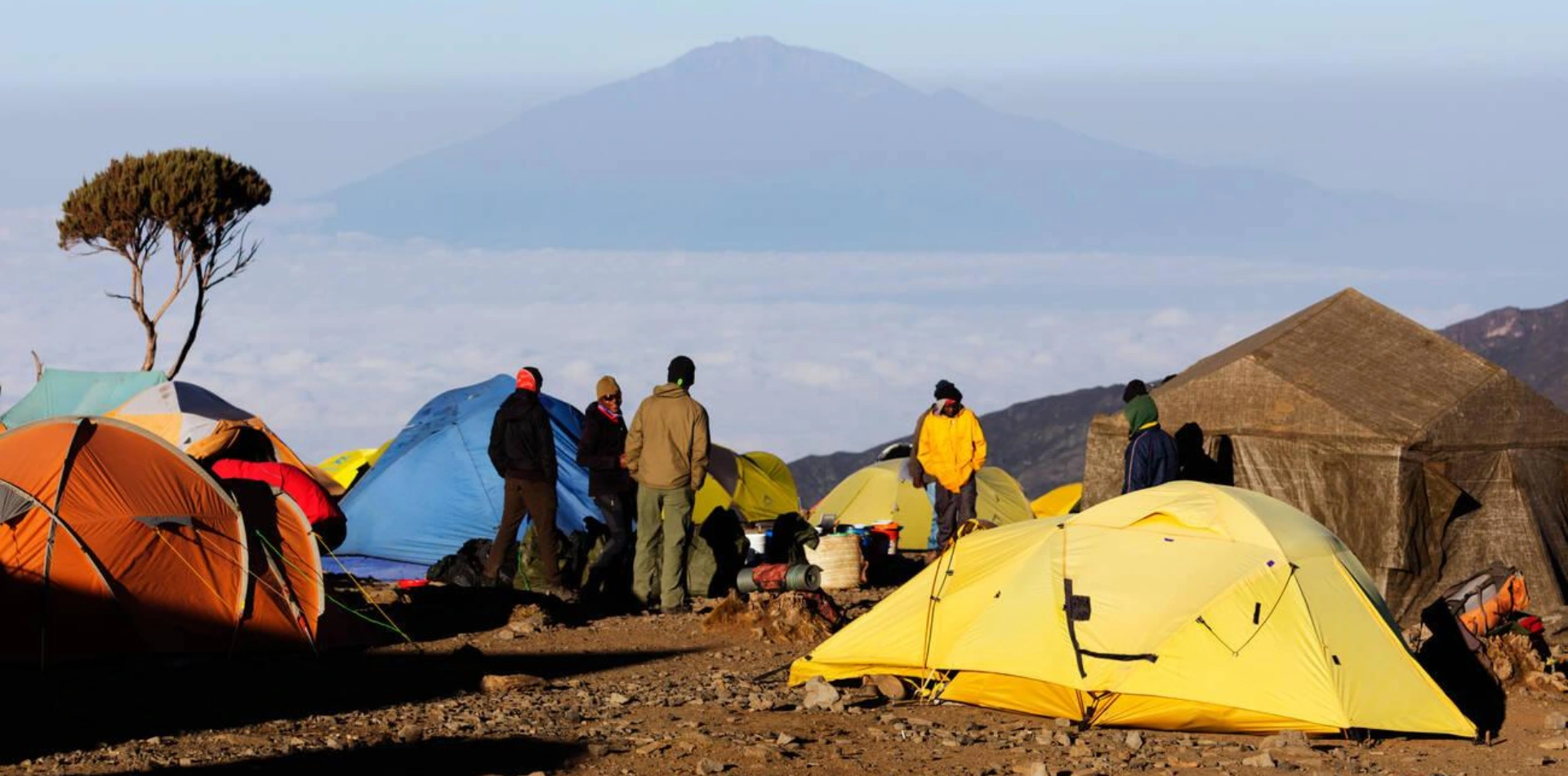
- Distance: ~10 km
- Time: 5–7 hours
- Habitat: Dense rainforest
The trek kicks off with a walk through thick, lush rainforest, where the trail is narrow, steep, and root-covered. It feels more like jungle trekking than mountain climbing at first. The canopy overhead keeps things cool and mysterious, and the sound of your boots on the damp earth is often the only noise you’ll hear.
By afternoon, you’ll reach Umbwe Cave Camp, tucked into the forest edge. It’s basic, remote, and peaceful. The mountain already feels wild, and you’ve only just begun.
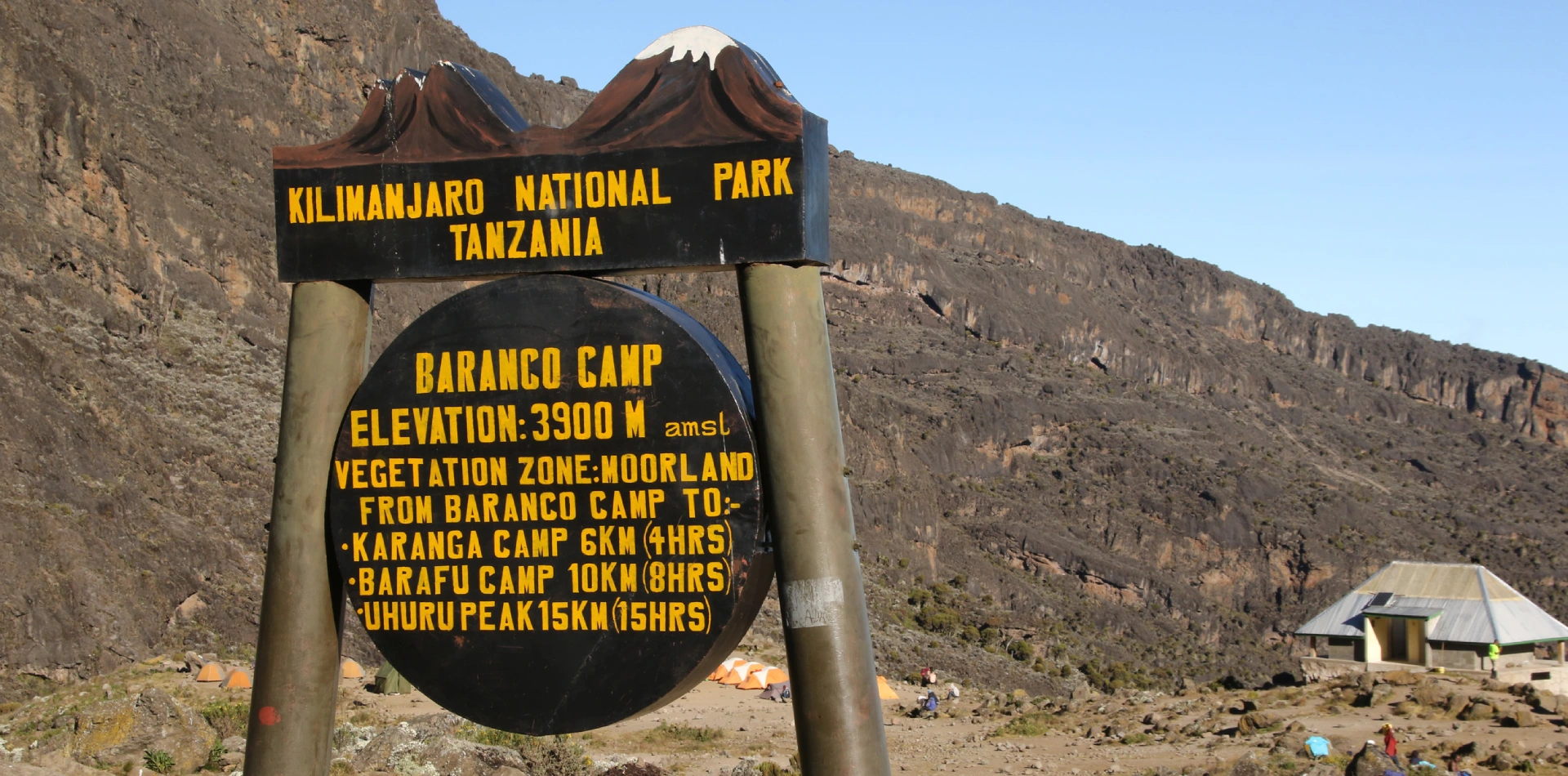
- Distance: ~6 km
- Time: 4–5 hours
- Habitat: Heath / Moorland
The trail gets steeper — and the landscape starts to shift dramatically. Trees give way to low shrubs and huge rocky outcrops as you climb a ridgeline between deep valleys. Kilimanjaro starts to show its true size.
By midday, you’ll arrive at Barranco Camp, beneath the massive southern face of Kibo and just below the Barranco Wall. Other trekkers from different routes join here, but Umbwe hikers are still few and far between. This is your first big altitude jump — pace yourself and hydrate.
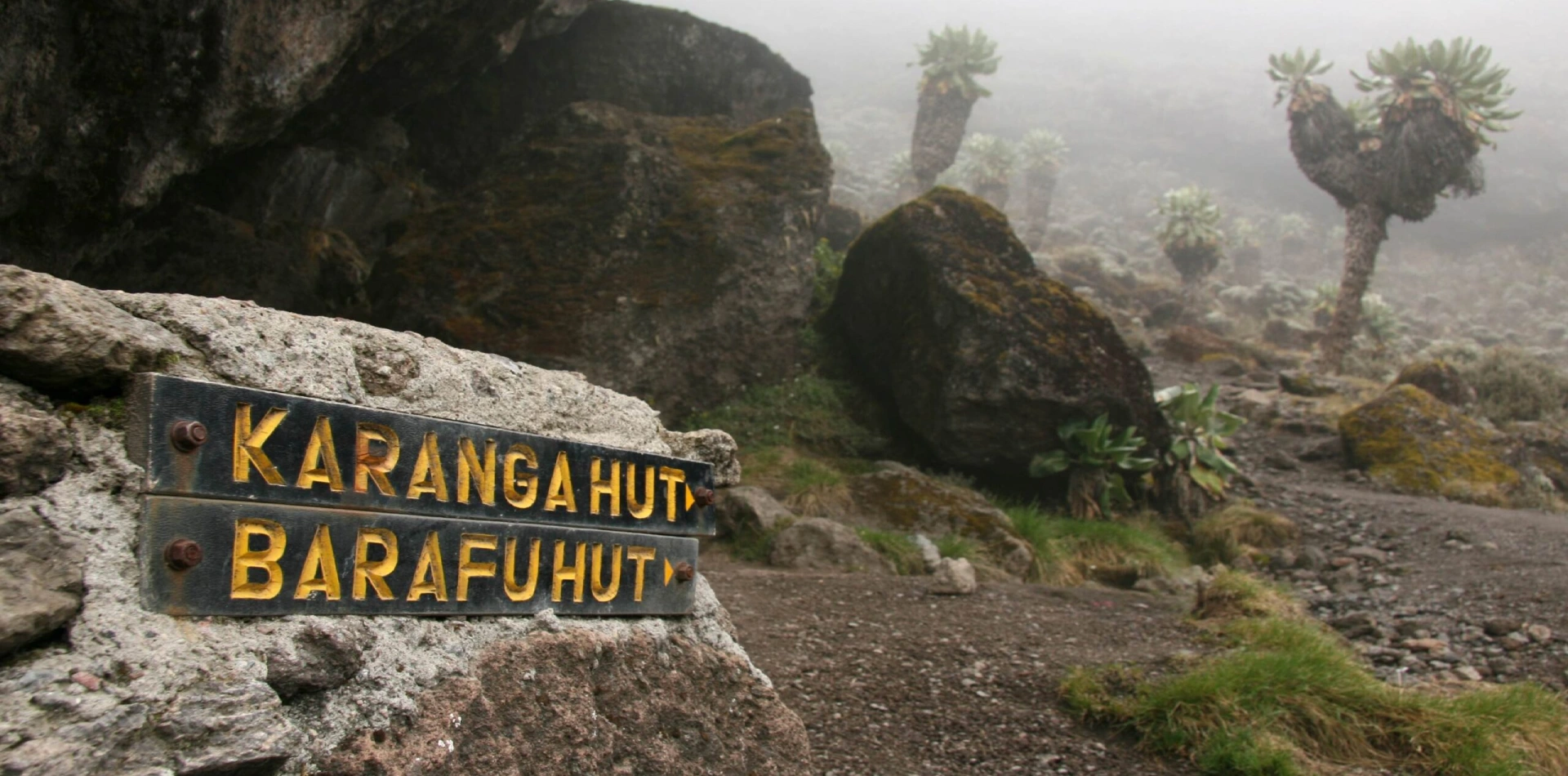
- Distance: ~5 km
- Time: 4–5 hours
- Habitat: Alpine desert
You’ll start the day by tackling the famous Barranco Wall — a steep, hands-on scramble that’s more exciting than it is dangerous. Once you reach the top, the views stretch forever: vast valleys, snowfields, and glacial ridges.
After a gentle descent and a few undulating hills, you’ll reach Karanga Camp, a windswept spot perfect for a mid-afternoon nap and acclimatization. You’re sleeping high now — and you’ve earned every meter of it.
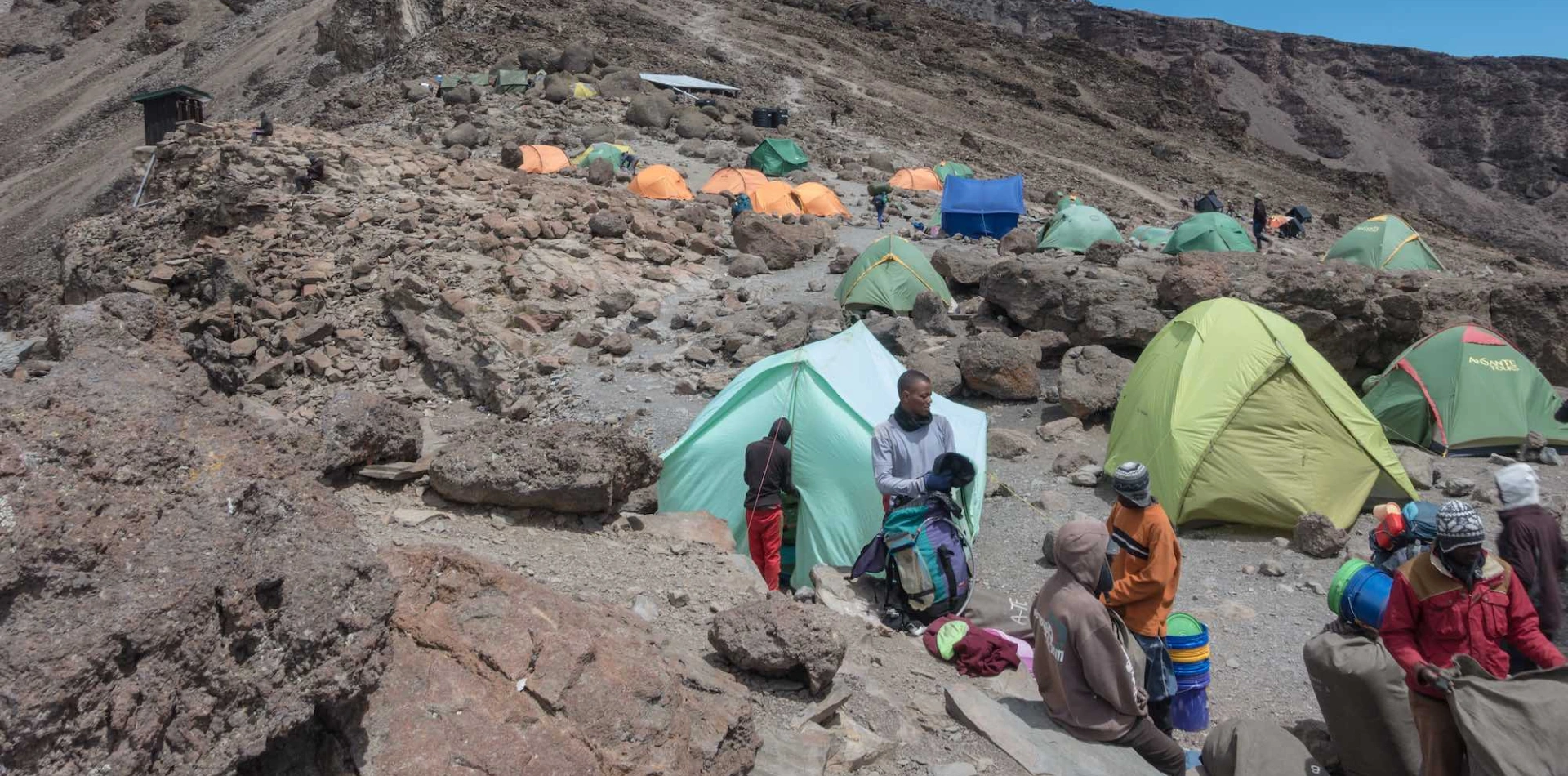
- Distance: ~4 km
- Time: 3–4 hours
- Habitat: Alpine desert
Today’s hike is short but significant. You’re approaching base camp, and the anticipation is building. The trail cuts through a stark, volcanic landscape. Loose gravel, cold winds, and thin air make it slow going.
You’ll arrive at Barafu Camp by early afternoon, eat an early dinner, and try to sleep — because your summit push begins just after midnight. Lay out your layers, snacks, headlamp, and water. The next 12 hours will be among the most difficult — and most rewarding — of your life.
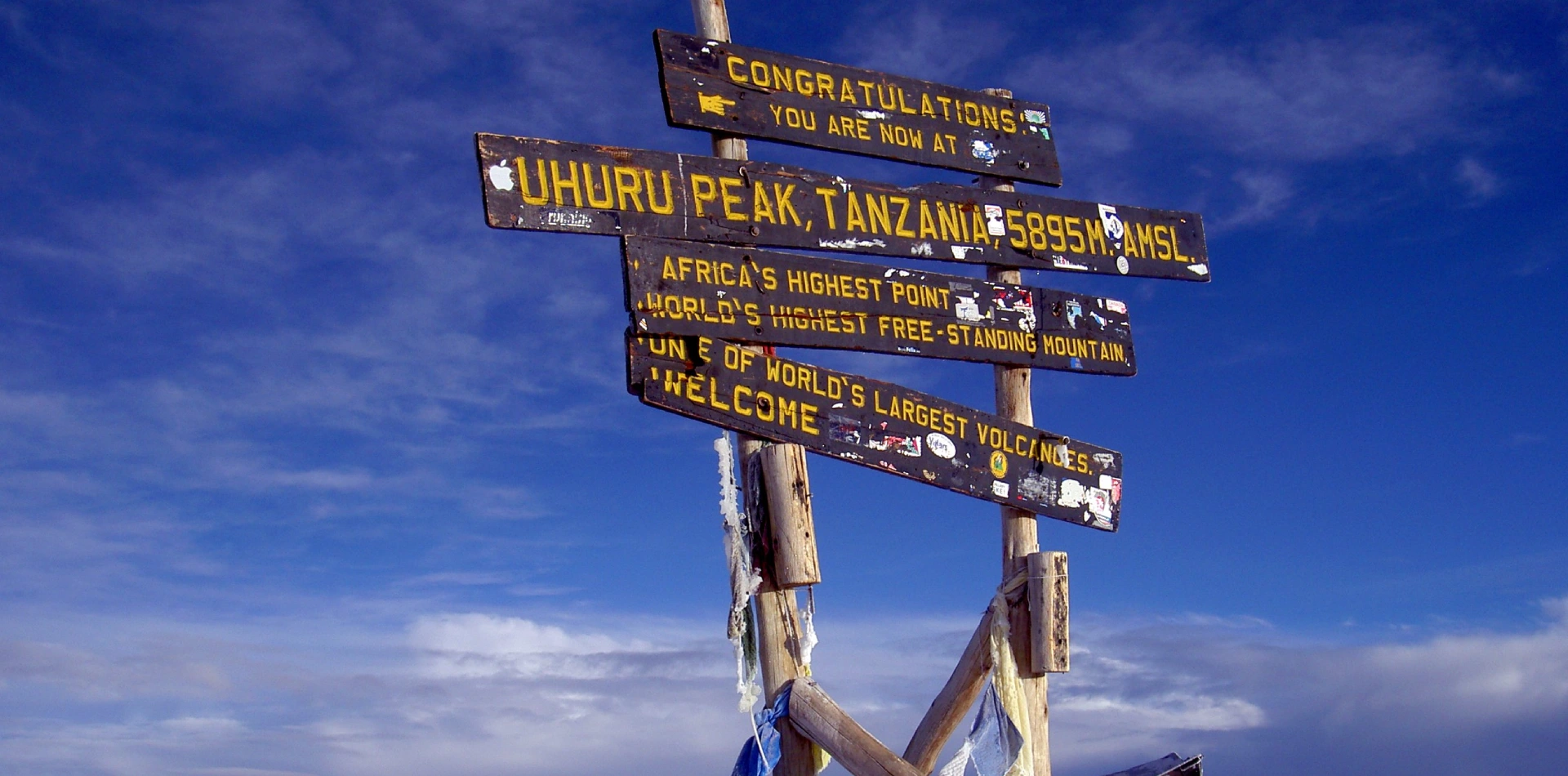
- Distance: ~17 km
- Time: 12–14 hours
- Habitat: Arctic summit to forest
You’ll wake around midnight and start your climb by headlamp, step by step. The cold bites. The air is razor-thin. But your guide is beside you, and your breath — slow and steady — keeps you moving.
After 6–8 grueling hours, you’ll reach Stella Point (5,756m) just as the sky begins to glow. From there, it’s a final push along the crater rim to Uhuru Peak, the highest point in Africa. Take it all in: the glaciers, the curve of the Earth, the sunrise, the silence. You did it.
After a few photos, you’ll begin your long descent to Mweka Camp, dropping more than 2,700 meters in a day. It’s tough on the knees, but the oxygen feels like magic.
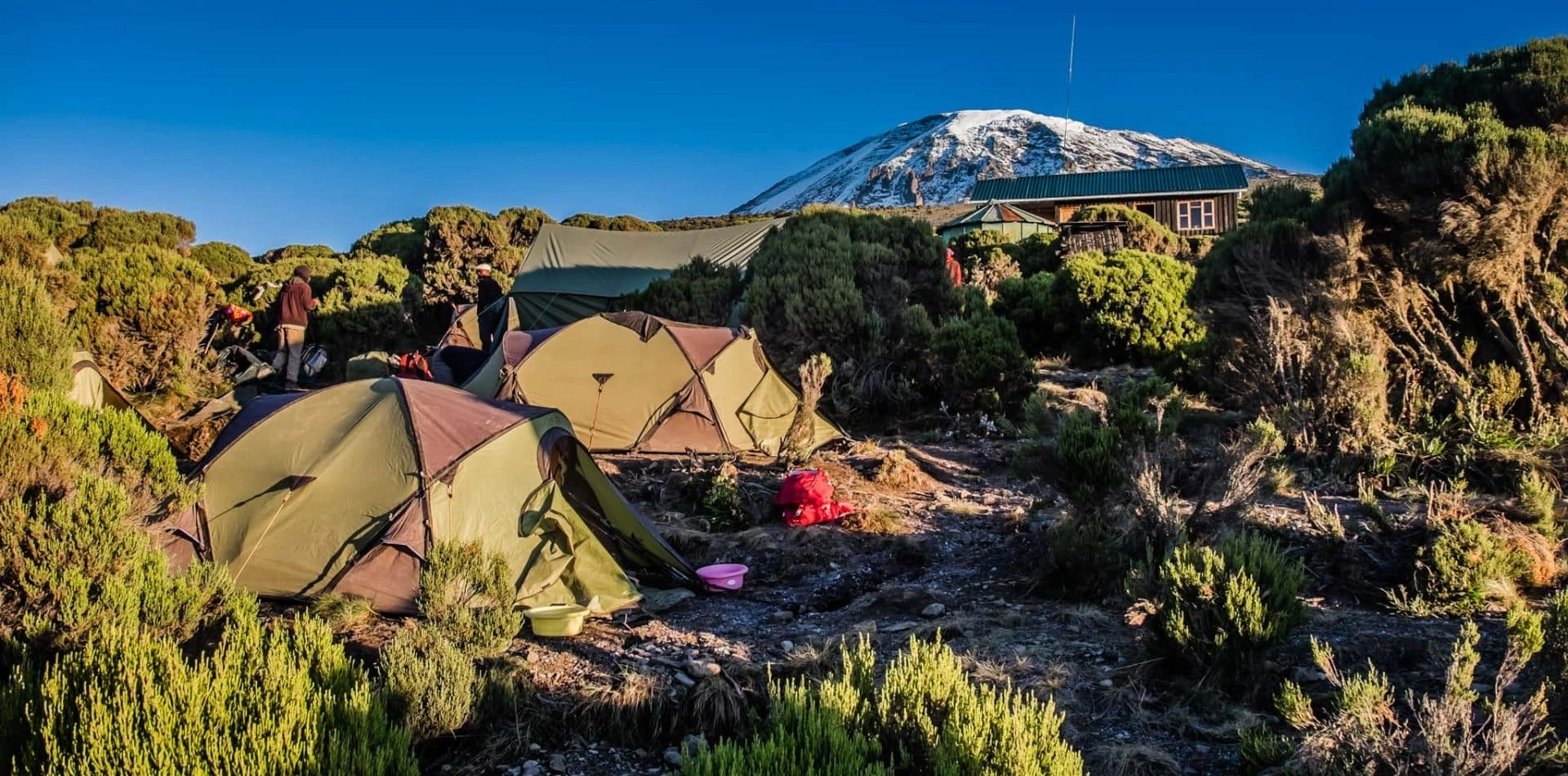
- Distance: ~10 km
- Time: 3–4 hours
- Habitat: Rainforest
Your final day is a relaxed descent back through the rainforest. The air is warm and moist again, birdsong returns, and your legs carry you more lightly than you expected.
At Mweka Gate, you’ll sign out, receive your summit certificate, and say goodbye to the incredible crew who helped you reach the top. Then it’s back to town — where a hot shower, a cold drink, and your first real bed in nearly a week are waiting.
Good to Know
- Trekkers who are fit, experienced, and comfortable at altitude
- Those who want a solitary, immersive mountain experience
- Climbers looking for a challenge, not a gentle walk
- People who aren’t afraid to work hard — and be deeply rewarded
Inclusions & Exclusions
- Kilimanjaro trekking according to the itinerary.
- Professional, English-speaking Wilderness First Responder & CPR certified Guide.
- Proper Ration of Mountain crew (Cook & Porters).
- Airport Transfers.
- Meals according to the itinerary.
- Drinking water and Full Board Meals.
- All National Park & Hut Fees, Crew Permits and VAT.
- Fair and Sustainable Salary Crew Wages.
- Gate Transfers.
- Complimentary Oxygen Cylinder.
- Flights
- Visa fees
- Travel or Medical Insurance .
- Tips for porters and mountain crew .
- Personal spending money for souvenirs etc.
- Energy food & beverages, alcoholic and soft drinks.
- Personal hire gear such as trekking poles, sleeping bags, etc.
- Additional lodge nights if early descent from the mountain.
Tour Map
Tour Gallery
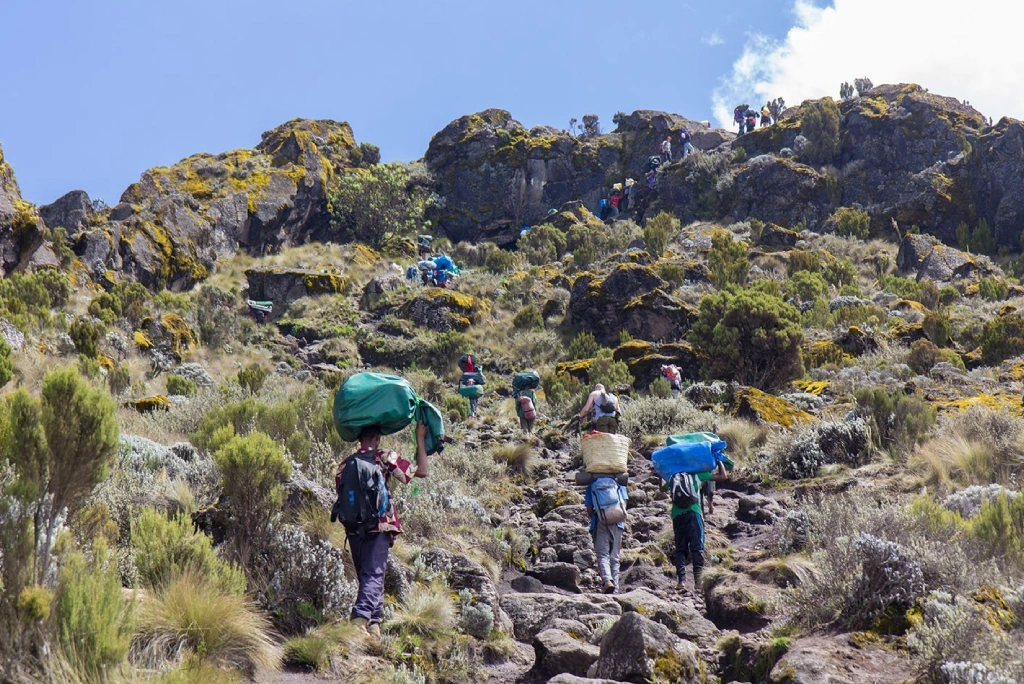
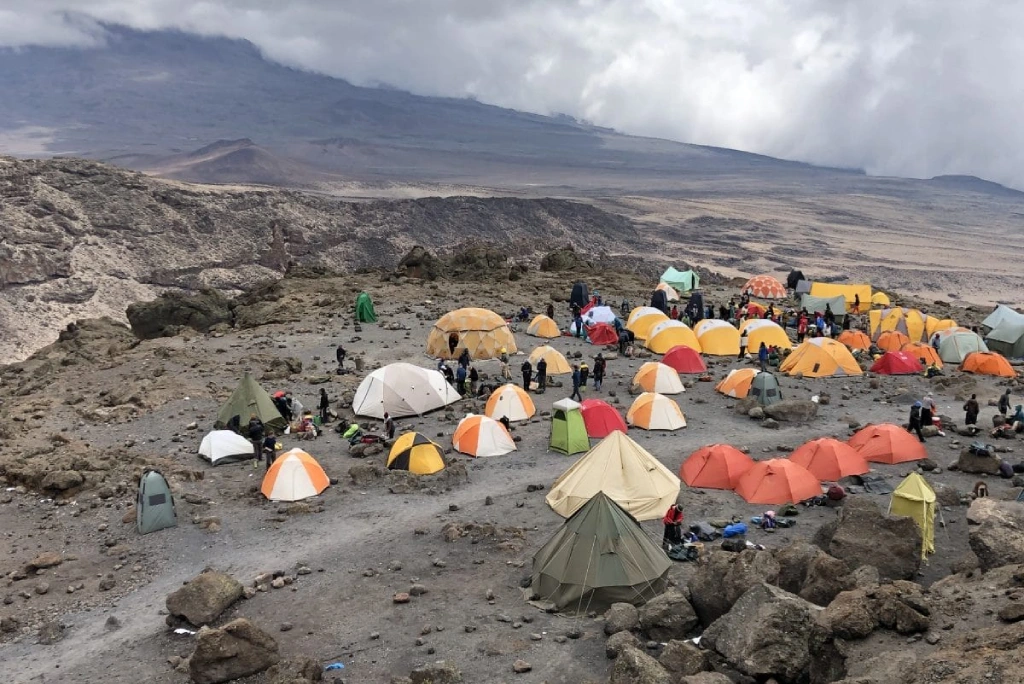
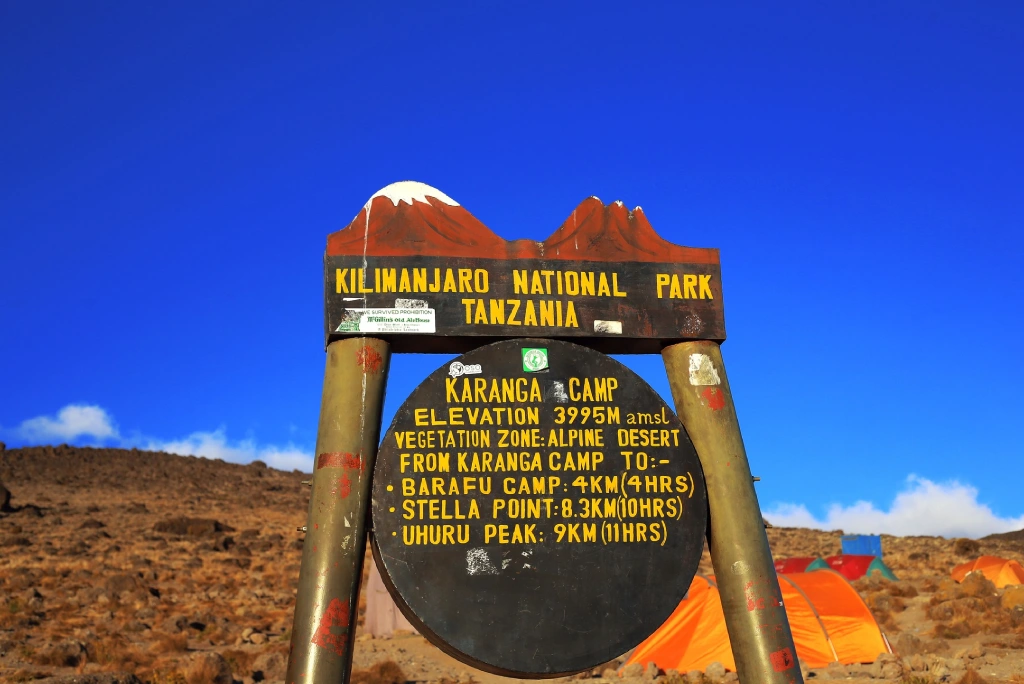
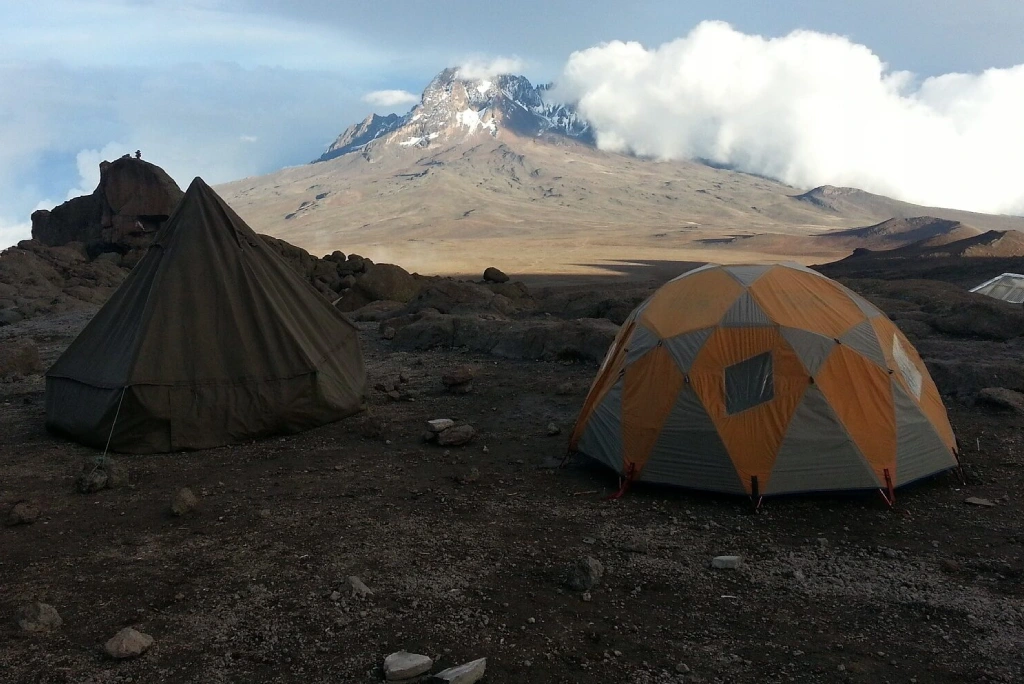
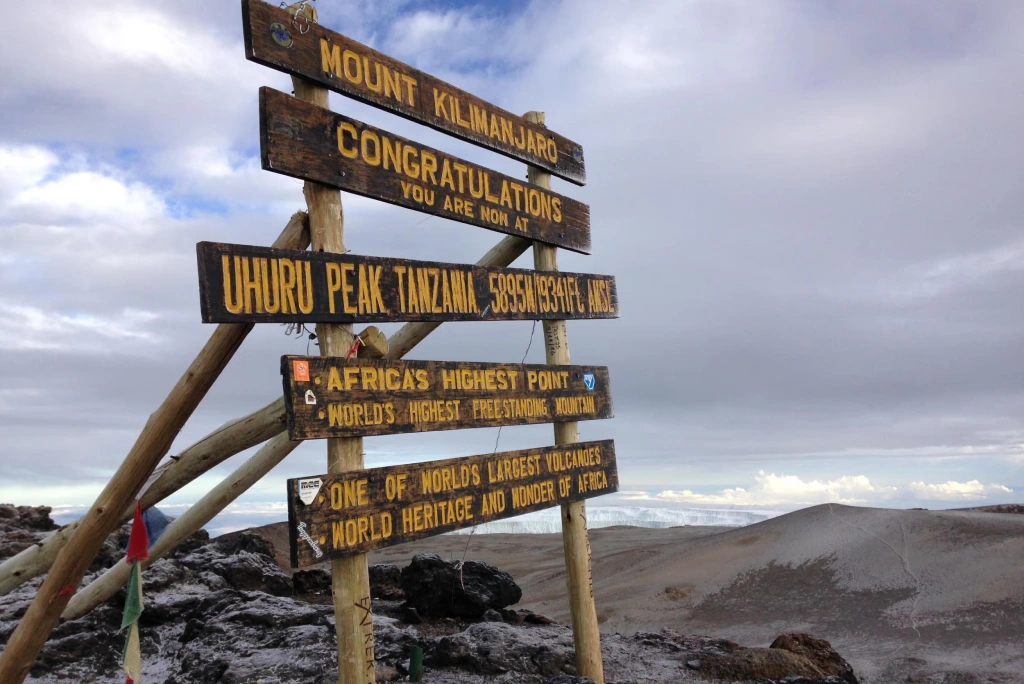
Related Mount Kilimanjaro Trekking
Given the off-road terrain that will be encountered, a bike that can adequately tackle this is also essential. A gravel bike is usually a popular option for bikepacking.
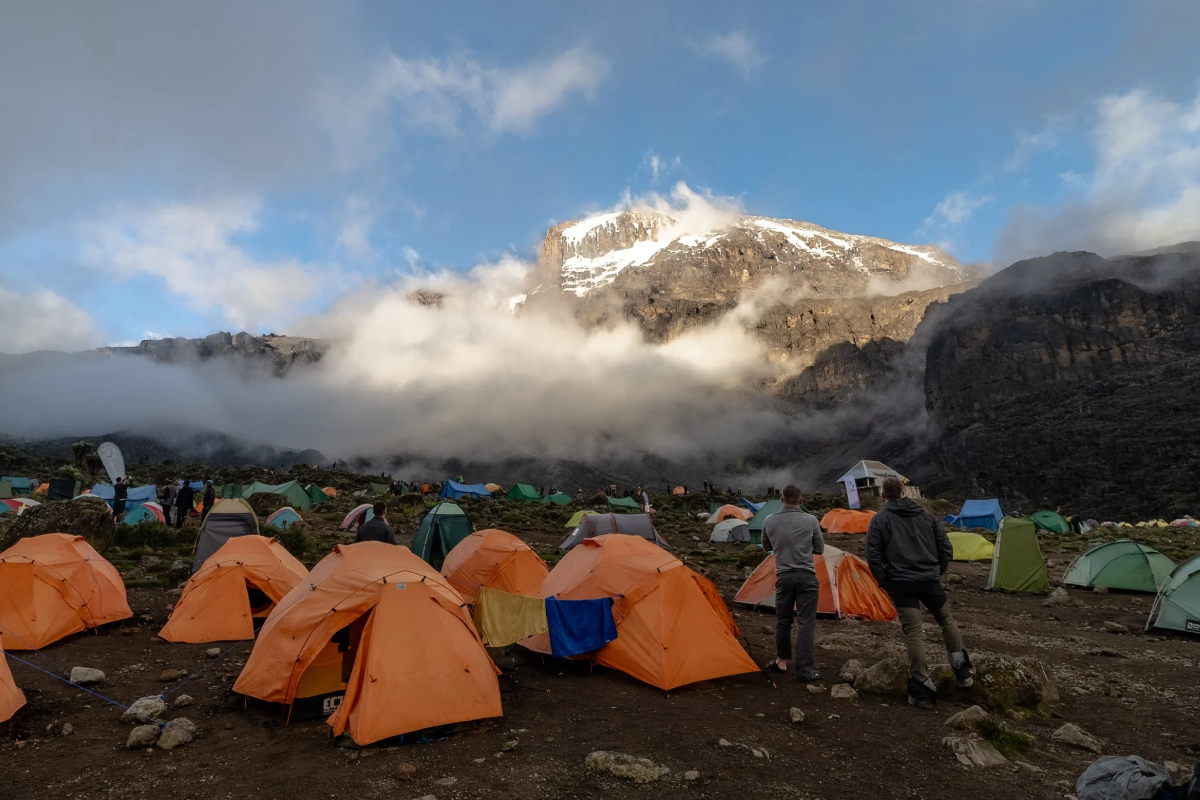
8 Days Lemosho Route
Embark on an 8-day Lemosho Route trek, traversing forests, plateaus, alpine deserts, and summiting Uhuru Peak with expert support.
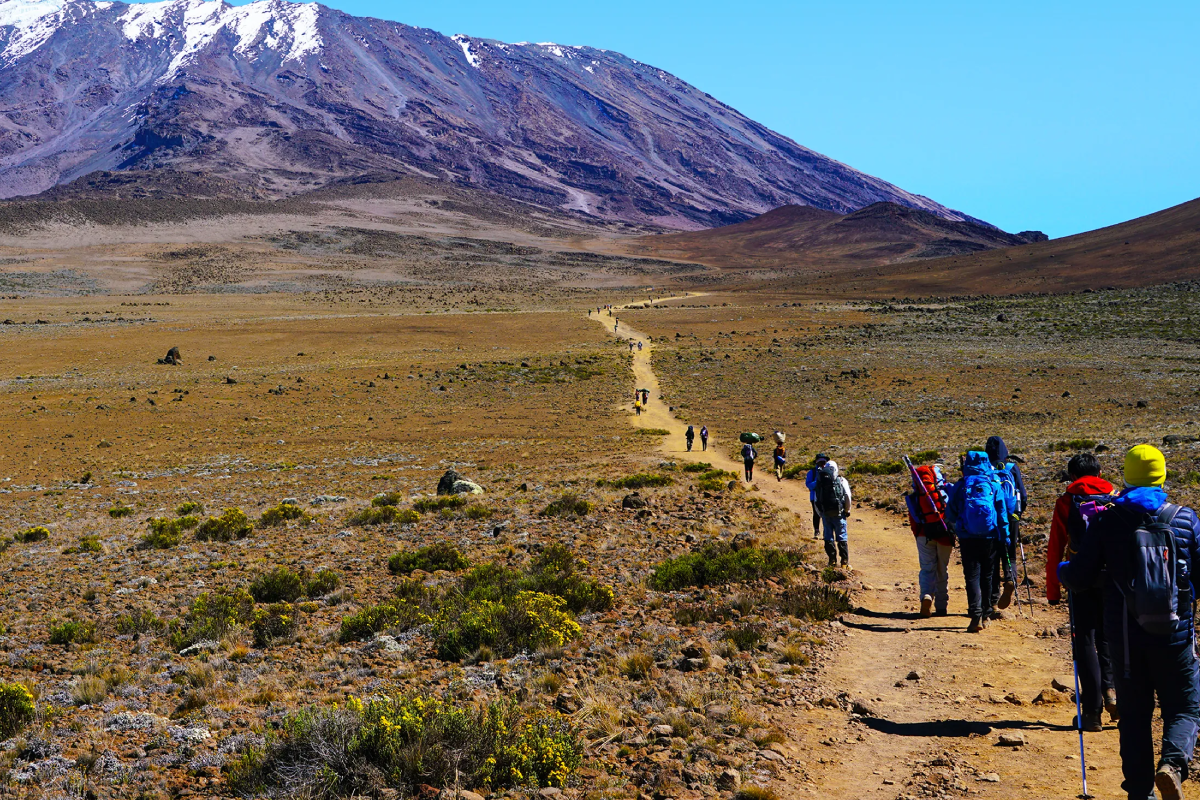
7 Days Machame Route
Trek Kilimanjaro’s 7-day Machame Route, crossing rainforests, moorlands, and glaciers, camping under stars, reaching Uhuru Peak with guided support.
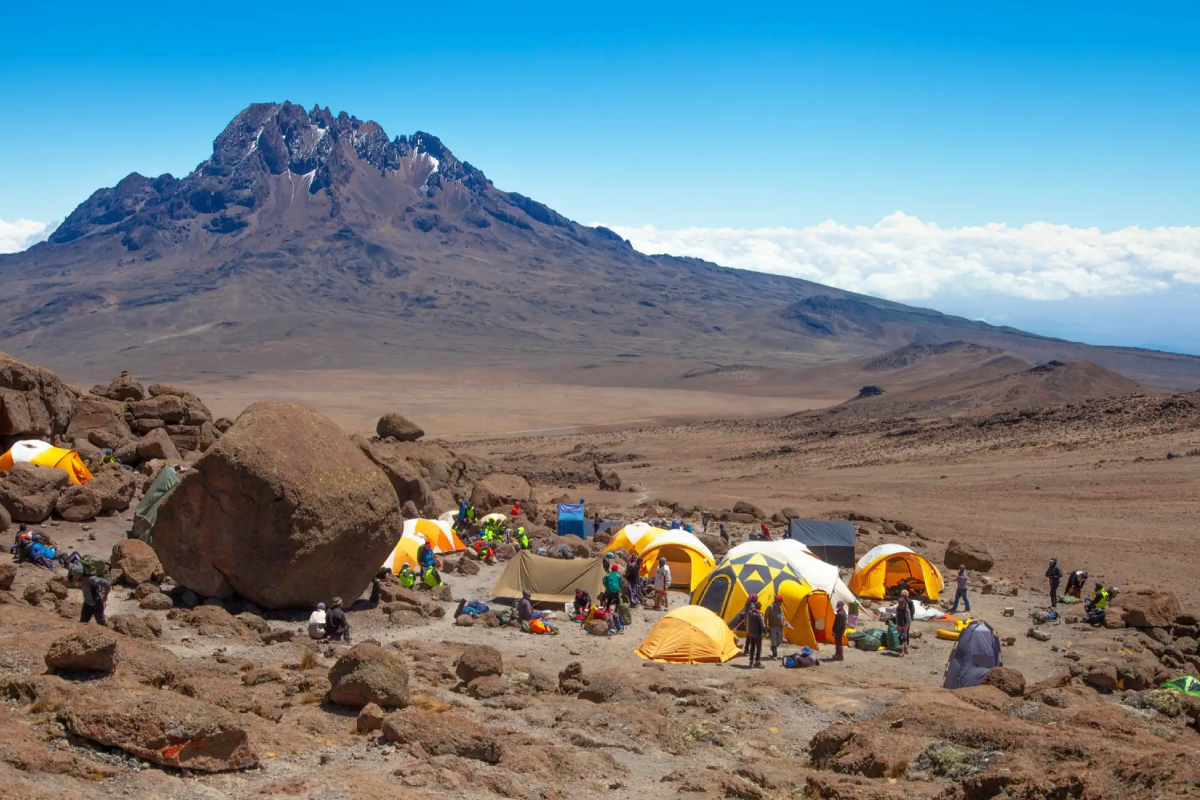
6 Days Rongai Route
Trek Kilimanjaro’s 6-day Rongai Route, ascending through rainforest, moorland, and alpine desert, summiting Uhuru Peak with expert guides and full support.
We make it easier for everyone to experience the world
Ready to explore Tanzania’s natural wonders? We’re here to help! Whether you’re planning a once-in-a-lifetime safari or a peaceful nature escape, our team makes travel easy and personal. Reach out today—let’s turn your dream of exploring Tanzania and beyond into reality. We make it easier for everyone to experience the world, one journey at a time. Contact us today!
Need I help? Talk to an Expert
+255767493713 +255690129757
Mountain Climbing FAQs
Discover essential information for climbing Tanzania’s iconic peaks—Mount Kilimanjaro, Mount Ol-Donyo Lengai, and Mount Meru. Learn about the best seasons, difficulty levels, required permits, gear recommendations, and safety tips. Whether you’re a first-time climber or experienced mountaineer, these FAQs provide guidance to help you prepare, stay safe, and make your mountain adventure unforgettable.
Climbing Kilimanjaro is challenging but achievable for fit individuals. It doesn't require technical skills, but altitude and endurance are key factors. Choosing a longer route improves acclimatization and success. Mental preparation, physical fitness, and proper gear make a big difference in your summit experience.
The best times are during dry seasons—January to March and June to October. These months offer clear skies, better trail conditions, and higher success rates. Avoid the rainy seasons for safety and comfort. Early booking is also advised due to route popularity.
Yes, Mount Meru is ideal for acclimatization before Kilimanjaro. It reaches 4,566 meters and offers great altitude training. The trek includes wildlife encounters and scenic ridges, preparing your body for Kilimanjaro’s higher elevation and reducing chances of altitude sickness significantly.
Yes, guided climbs are mandatory for both Kilimanjaro and Mount Meru. Guides ensure your safety, manage logistics, and provide expert support. Their local knowledge enhances your journey. On Mount Meru, park rangers accompany all trekkers due to wildlife presence in the area.
Ol Doinyo Lengai is the only active natrocarbonatite volcano in the world, revered by the Maasai as the “Mountain of God.” The steep climb is rewarded with unique lava flows, spiritual significance, and sunrise views over Lake Natron and the Great Rift Valley.
Altitude sickness can affect anyone above 2,500 meters. Symptoms include headache, nausea, and fatigue. To reduce risk, climb slowly, stay hydrated, and acclimatize properly. Longer itineraries on Kilimanjaro and a Mount Meru pre-climb significantly boost altitude adaptation and summit success.
You’ll need layered clothing, waterproof outerwear, sturdy hiking boots, sleeping gear (for Kilimanjaro and Meru), headlamp, trekking poles, and hydration packs. For Ol Doinyo Lengai, include lightweight but grippy footwear and breathable clothing due to its steep, dusty volcanic terrain.
What Customers Say About Us
